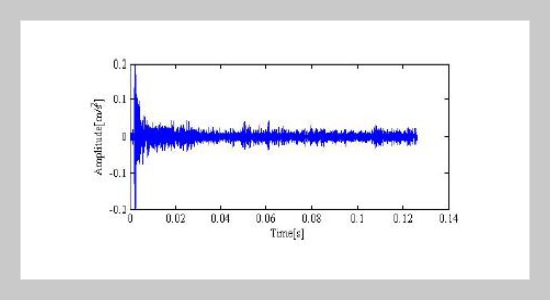Jingzong Yang 1, Tianqing Yang 1, and Chunchao Shi1
1School of Big Data, Baoshan University, BaoShan, Yunnan, 678000, P.R.China
Received:
October 18, 2021
Accepted:
November 8, 2021
Publication Date:
December 6, 2021
Copyright The Author(s). This is an open access article distributed under the terms of the Creative Commons Attribution License (CC BY 4.0), which permits unrestricted use, distribution, and reproduction in any medium, provided the original author and source are cited.
Download Citation: ||https://doi.org/10.6180/jase.202208_25(4).0018
ABSTRACT
Aiming at the difficulty of pipeline blockage fault identification, a fault identification method based on multiresolution permutation entropy and artificial bee colony (ABC) algorithm optimized support vector machine (SVM) is proposed. Firstly, the acoustic active detection method is used to collect the signals under different blocking conditions. Then, the extracted acoustic impulse response signal is decomposed into different scale components by using wavelet transform algorithm, and the arrangement entropy of each component is extracted based on the arrangement entropy theory. And then, based on the permutation entropy theory, the permutation entropy in each component is extracted to effectively characterize the different levels of nonlinear features in the signal. Secondly, the artificial bee colony algorithm is used to optimize the penalty factor and kernel function of support vector machine, and the optimized parameters are used to construct the fault identification model. The results show that the proposed method can improve the identification accuracy of pipeline blockage fault. Meanwhile, compared with the traditional SVM and feed forward neural network with back propagation (BP) model, it has better effect.
Keywords:
Multiresolution analysis; Permutation entropy; Support vector machine; Pipeline; Blockage; Fault identification
REFERENCES
- [1] Q. zhengyang, D. Songsheng, J. Shizhang, C. Yongguang, and Shengqiang, (2006) “Research on pipeline plugging detection" Oil & Gas Storage and Transportation 25(5): 33–35.
- [2] A. Abuliemu, M. Mamatrishat, and D. J. W. Shiheng, (2009) “Brief Studying of Oil Crust Thickness Measurement by Gamma Ray Compton Scattering Approach" Journal of Xinjiang University (Natural Science Edition): 02.
- [3] L. Rogers. “Pipeline blockage location by strain measurement using an ROV”. In: Offshore Technology Conference. OnePetro. 1995. DOI: 10.4043/7862-ms.
- [4] A. Hunt, (1996) “Fluid properties determine flow line blockage potential" Oil and Gas journal 94(29):
- [5] J. Y. Song, S. Li, Z. L.Wang, and X. J. Peng. “Study on Detection and Location of Mobile Oil Pipeline Leakage Based on Pressure Gradient Method”. In: Advanced Materials Research. 580. Trans Tech Publ. 2012, 395–400. DOI: 10.4028/www.scientific.net/AMR.580.395.
- [6] F. Jian and Z. Huaguang. “Oil pipeline leak detection and location using double sensors pressure gradient method”. In: Fifth World Congress on Intelligent Control and Automation (IEEE Cat. No. 04EX788). 4. IEEE. 2004, 3134–3137.
- [7] M. H. Chaudhry, (1979) “Applied hydraulic transients":
- [8] J. C. Liou and J. Tian, (1995) “Leak detection—transient flow simulation approaches": DOI: 10.1115/1.2835348.
- [9] D. Sharp and D. Campbell, (1997) “Leak detection in pipes using acoustic pulse reflectometry" Acta Acustica united with Acustica 83(3): 560–566.
- [10] S. Datta and S. Sarkar, (2016) “A review on different pipeline fault detection methods" Journal of Loss Prevention in the Process Industries 41: 97–106. DOI: 10.1016/j.jlp.2016.03.010.
- [11] C. Bandt and B. Pompe, (2002) “Permutation entropy: a natural complexity measure for time series" Physical review letters 88(17): 174102. DOI: 10.1103/PhysRevLett.88.174102.
- [12] X. Zhang, Y. Liang, J. Zhou, et al., (2015) “A novel bearing fault diagnosis model integrated permutation entropy, ensemble empirical mode decomposition and optimized SVM" Measurement 69: 164–179. DOI: 10.1016/j .measurement.2015.03.017.
- [13] Z. Shi, W. Song, and S. Taheri, (2016) “Improved LMD, permutation entropy and optimized K-means to fault diagnosis for roller bearings" Entropy 18(3): 70. DOI: 10.3390/e18030070.
- [14] L. Zhao, W. Yu, and R. Yan, (2016) “Gearbox fault diagnosis using complementary ensemble empirical mode decomposition and permutation entropy" Shock and Vibration 2016: DOI: 10.1155/2016/3891429.
- [15] V. Vapnik, “The Nature of Statistical Learning Theory. New York: Springer Verlag, 1995":
- [16] S. M. O,W. J. A. E, and G. A. Theory of support vector machines. Royal Holloway. 1996.
- [17] J. Sun, Q. Xiao, and J. Wen, (2014) “Gas pipeline small leak aperture classification based on local mean decomposition envelope spectrum entropy and SVM" J. Mech. Eng 3(5): 2835–2842. DOI: 10.3901/JME.2014.20.018.
- [18] Z.-q. Song, Z.-x. Li, and Z. Zhang, (2011) “Study on SVM-based Fusion Algorithm Identifying Pipeline Crack Flaw MFL Signal Characteristics" Control and Instruments in Chemical Industry: 05.
- [19] M. Najafzadeh, R. Noori, D. Afroozi, B. Ghiasi, S.-M. Hosseini-Moghari, A. Mirchi, A. T. Haghighi, and B. Kløve, (2021) “A comprehensive uncertainty analysis of model-estimated longitudinal and lateral dispersion coefficients in open channels" Journal of Hydrology 603: 126850. DOI: 10.1016/j.jhydrol.2021.126850.
- [20] M. Najafzadeh, A. Etemad-Shahidi, and S. Y. Lim, (2016) “Scour prediction in long contractions using ANFIS and SVM" Ocean Engineering 111: 128–135. DOI: 10.1016/j.oceaneng.2015.10.053.
- [21] Z. Dong, J. Zheng, S. Huang, H. Pan, and Q. Liu, (2019) “Time-shift multi-scale weighted permutation entropy and GWO-SVM based fault diagnosis approach for rolling bearing" Entropy 21(6): 621.
- [22] D. Karaboga. An idea based on honey bee swarm for numerical optimization. Tech. rep. Technical report-tr06, Erciyes university, engineering faculty, computer . . ., 2005.









